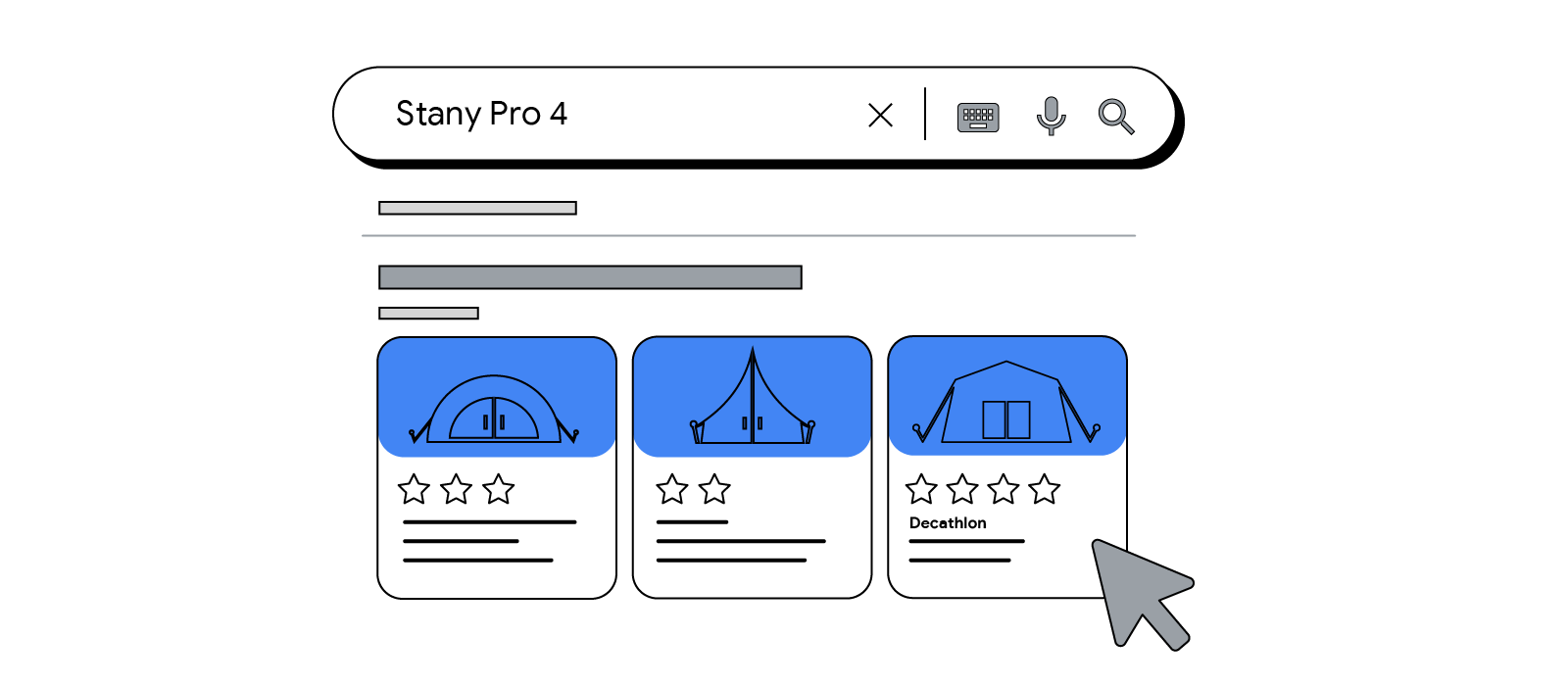Tomáš Hurt is a Senior Campaign Specialist at the digital agency Marketup, focusing on automation and testing new, innovative approaches. He shares how together with sporting goods retailer, Decathlon, they uncovered the hidden potential of shopping campaigns.
With today’s consumers moving non-stop between different platforms and devices, and a surge in online shopping activity, retailers are faced with more competition than ever before. So how do you stand out among a sea of offerings?
We looked for answers with our client, Decathlon. As the world’s largest sporting goods retailer, with online and brick-and-mortar stores in over 60 countries across the globe, the brand relied on Shopping campaigns — which show specific products as people are searching online — as its go-to approach for being noticed by customers.
Shopping for new opportunities
Decathlon had been running successful long-term Shopping campaigns in Czechia to attract sports enthusiasts for years. But in our analysis of campaign effectiveness, we found a pocket of opportunity to optimise.
We started by analysing whether ads were displaying the right products in the region. Using Google Ads, we identified that Decathlon-branded products were not generally searched for in Czechia. And for more general queries, like ‘mountain bikes’, we saw search results displaying more expensive Decathlon products that weren’t frequently purchased.
This means that if someone is searching for mountain bikes, the Shopping feed would display all relevant products available on the Decathlon website in no particular order. We wanted to ensure that the bestselling products in that category would show at the top, rather than more expensive or less popular options. This approach would help Decathlon maximise the chance to secure a sale.
Filling your Shopping ads product feed with additional details, such as product popularity and stock availability, allows you to better tailor your campaigns
To provide a more competitive offering, we lined up products that are ‘bestsellers’ in their categories.
The more (details) the merrier
Shopping campaigns are created based on a product feed, which contains a variety of product information. This information is then displayed to the user, but it can also be used to segment and optimise campaigns.
There are many fields that are not mandatory — but that’s where the opportunities lie. Since those details are used to split the campaigns and set various targets, filling your product feed with additional details, like margin, product popularity, price competitiveness, and stock availability, allows you to use that information to better tailor your campaigns.
Prioritising best-selling products
We knew that Decathlon needed to improve what products appear in their feed, but the company didn’t have the systems in place for information on best-selling products to automatically show up. So we came up with a solution, using first-party data, to identify the most up-to-date top selling products and implement them in the feed on a daily basis.

We used a variety of sources to compile data points like product revenue, margin, number of products sold and availability, and uploaded them to Big Query — an accessible tool where you can gather all of your marketing data — to flag those products that we knew were the best-selling ones. Then we uploaded that information back to the feed.
Making smart bidding smarter
Once we had the supplemental data in the feed, we automated bidding. Smart Bidding optimises for conversions or conversion values using machine learning — but first it has to give those products a chance to get enough conversions to see which are most popular. And when you’re working with 60,000 products, like Decathlon’s Czechia offerings, it takes time to collect enough conversion data for the tool to determine which are most profitable in terms of total revenue and margin.
To speed up this part of the process, we optimised the machine learning algorithm with the newly categorised ‘best sellers’, so smart bidding could include these products straight away. And it wasn’t just the single most popular product that would be included, several products were flagged in each category. That way if, for example, the best-selling item in a category goes out of stock, smart bidding would be informed immediately that the next product in line now has the highest chance of generating a sale and it would be pushed in the product feed instead.

During the first 12 months of this new approach, Decathlon increased revenue 3.6X from Google Ads campaigns and raised ROAS by 44%, while its entire e-shop’s revenue improved 1.9X.





